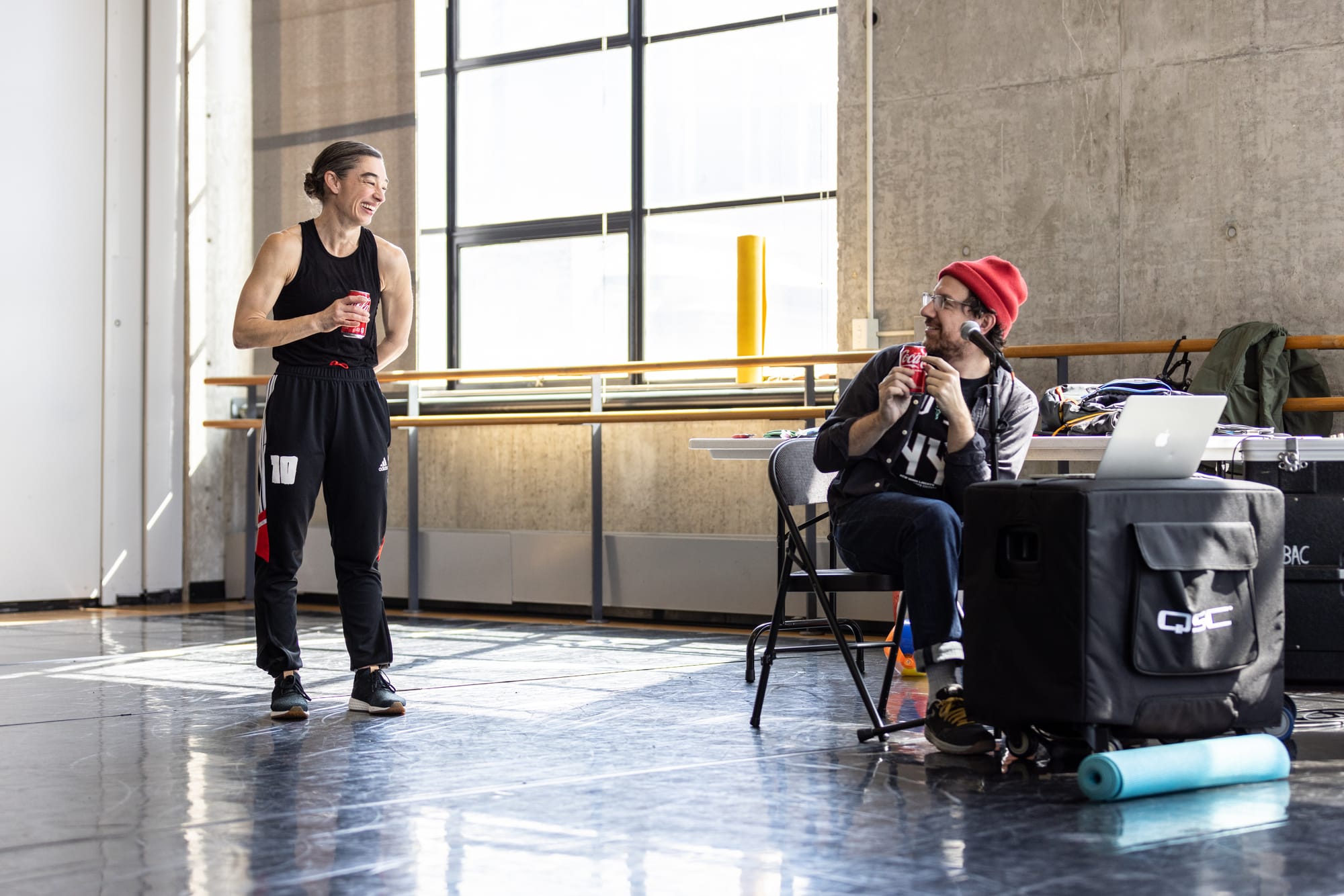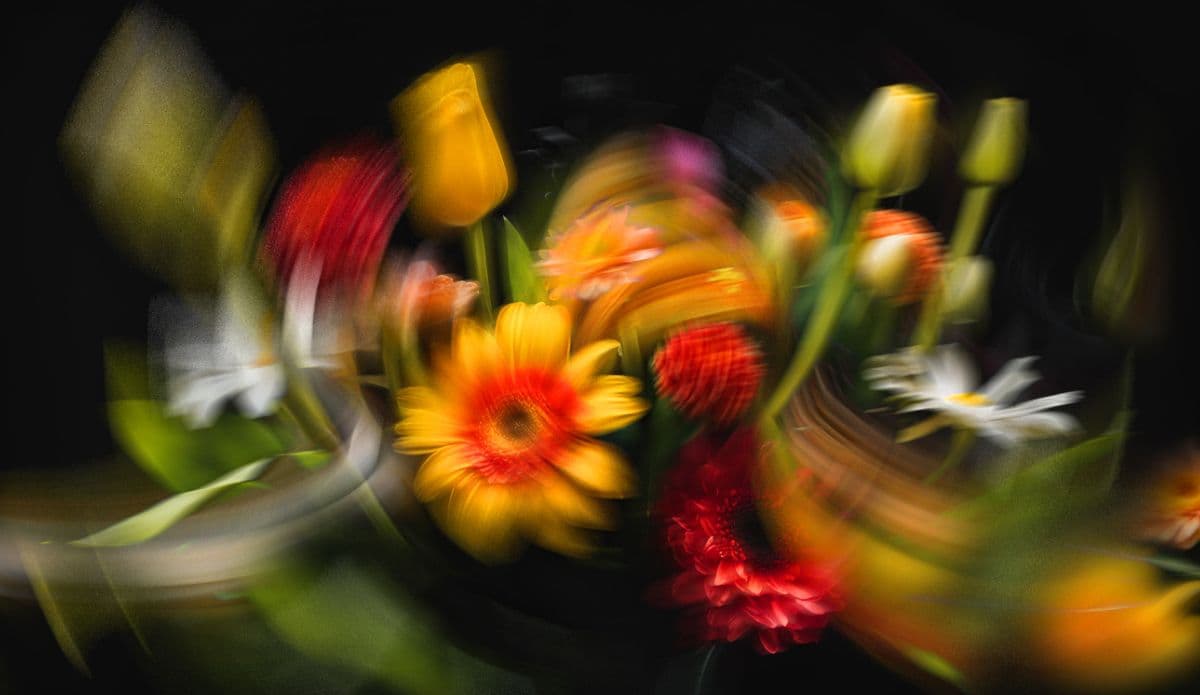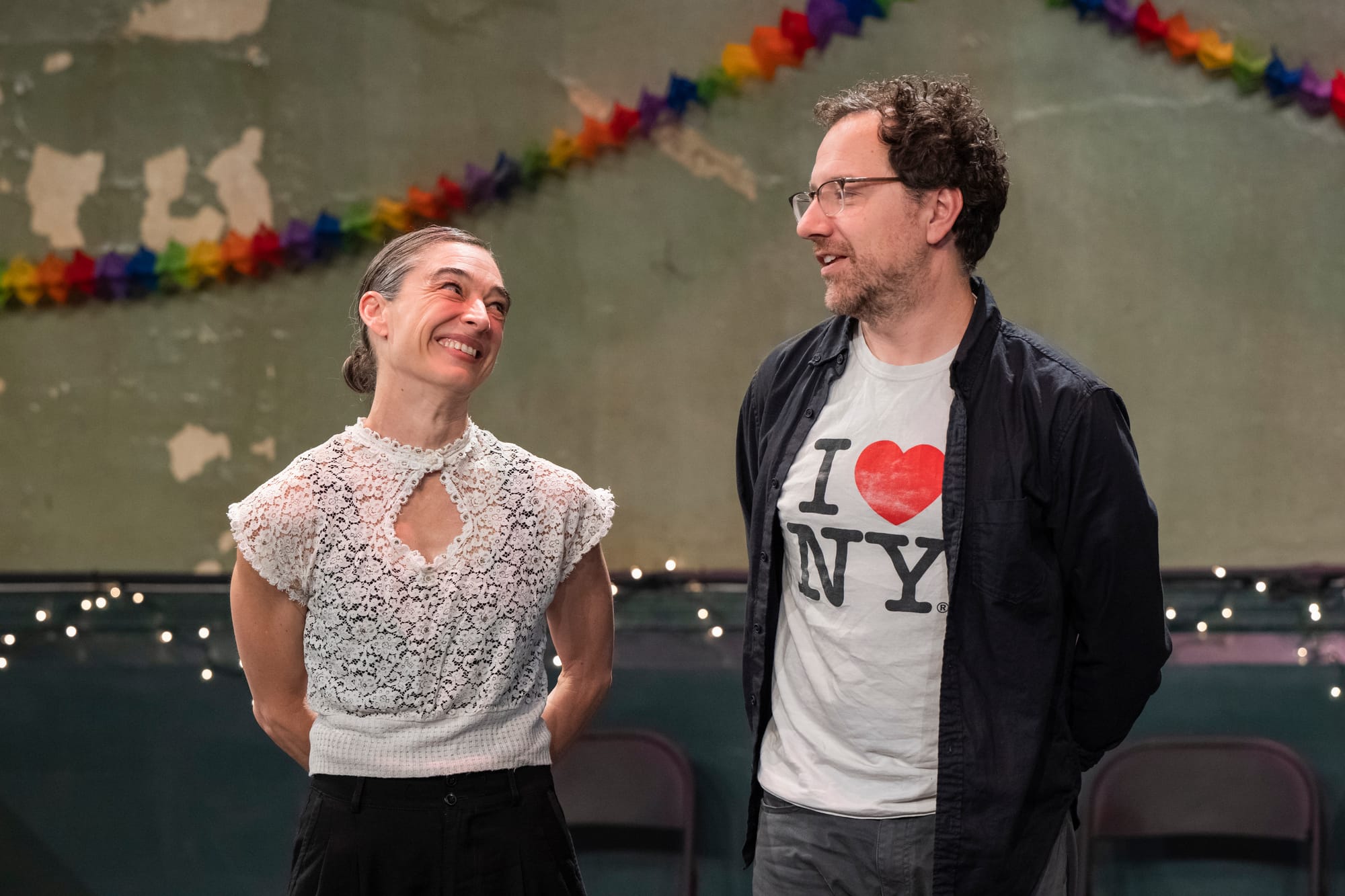Our version of a memory play.
By Williamstown Theatre Festival
April 17, 2025

Monica Bill Barnes is a choreographer and performer. She’s been dancing for about forty years but hardly ever calls herself a dancer. I (Robbie Saenz de Viteri) write and insist I’m not performing even when I’m talking on stage. We’ve been collaborating for something like the last ten years. I say “something like” because the borders of working together have a pretty soft edge. When did we start? Whose idea was this? I’m going to make this change because of something you said which prompts you to make a change now too which means I should fix something for this new idea to make sense which makes you ask a question that I can’t stop thinking about and feel like we must address in the next version but I don’t know how, maybe you do? On a practical level, it’s hilariously inefficient. On a spiritual one, collaborating continues to make us feel part of something larger than ourselves.
A few years ago, Monica was spending a lot of time dancing alone. That’s not really something she’s ever been interested in, dancing alone. To hide that truth from herself she invented other people she could be dancing with. She’d jump from one side of a duet to another, fall into lock step with a partner who wasn’t there, drop back like a wallflower watching the same scene, then salsa into line with a group of friends that only existed in her imagination. Like a lot of dances Monica makes up, it could either be really funny or really sad. And like so much of her choreography, I saw myself in it.
That’s a strange thing to say because we are, on the outside, not very alike. She’s a woman who’s been dancing for forty years. She pulls her hair back in a serious bun and is equally serious about applying a strong, subtle lipstick before special occasions. None of those things describe me. And yet—those lonely dances felt suffused with my own memories.
In the opening lines of The Glass Menagerie, Tom Wingfield explains something about the play to the audience, “The play is memory. Being a memory play, it is dimly lighted, it is sentimental, it is not realistic. In memory everything seems to happen to music. That explains the fiddle in the wings. I am the narrator of the play, and also a character in it.” I could say those exact lines at the top of our show, Many Happy Returns, and they wouldn’t feel out of place. The fiddle might. We
have plenty of music, but no fiddle. In the show, I sit on stage—I’m the narrator, writing and telling my story which is actually Monica’s story, or is it your story, maybe, a little bit, too?
Dance is an art form that’s all about the body, where all memories live. You know the feeling. Something, some personal version of Proust’s madeleine, throws you back into a former version of yourself and you feel, in your muscles, different. Then your voice comes in, that person inside starts trying to figure it all out—have you changed? Was it better then? Is it better now? Can you be that person again? Should you be? Why did any of it change anyway? Let’s make a list.
In Many Happy Returns we’re sharing a character. Monica is the body, moving through the memories. I’m the voice, trying to turn these quick flashes backwards into a story that helps us make sense of ourselves. It’s our version of a memory play. I don’t know if Tennessee Williams would recognize it as such, but I’m grateful that he wrote Tom Wingfield (a version of Williams himself) some lines that describe our work perfectly.
– Robbie Saenz de Viteri, Co-creator, writer, and performer
We would like to congratulate Robbie and Monica on their recent recognition as 2025 Guggenheim Fellows.

